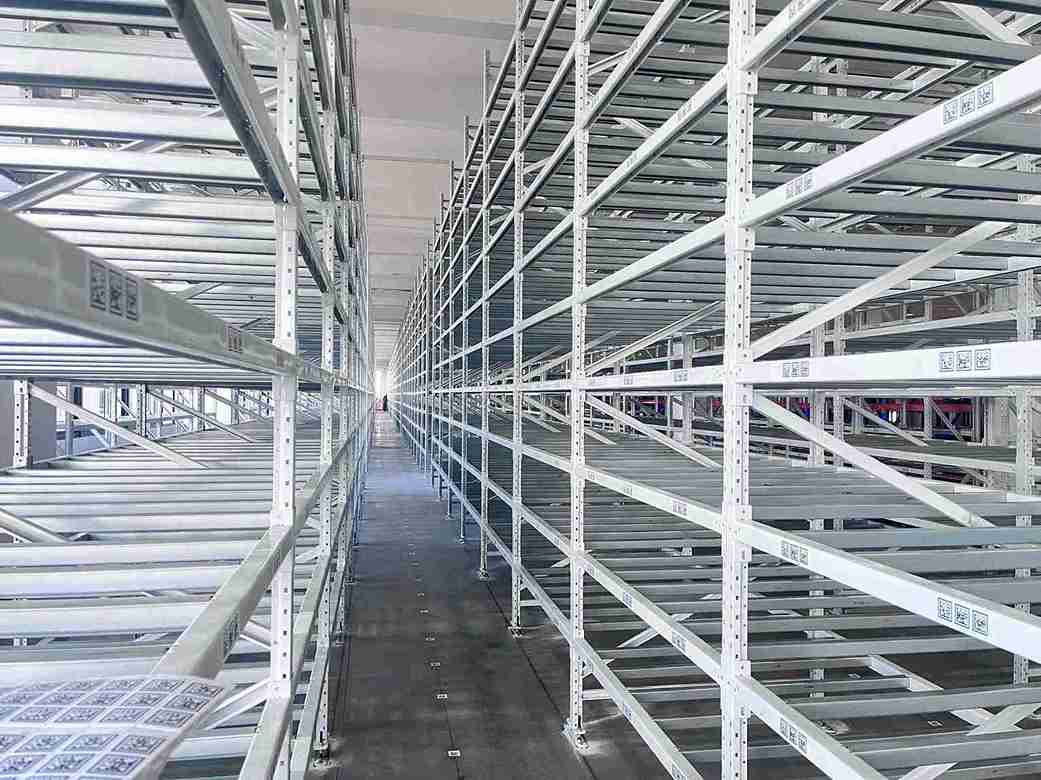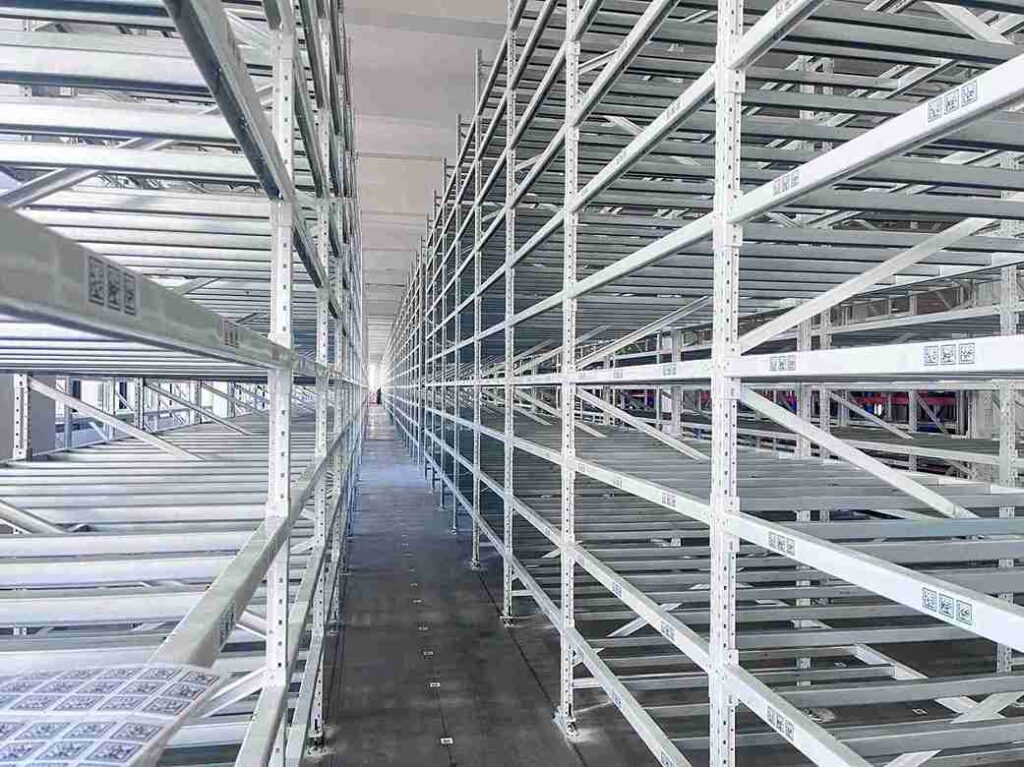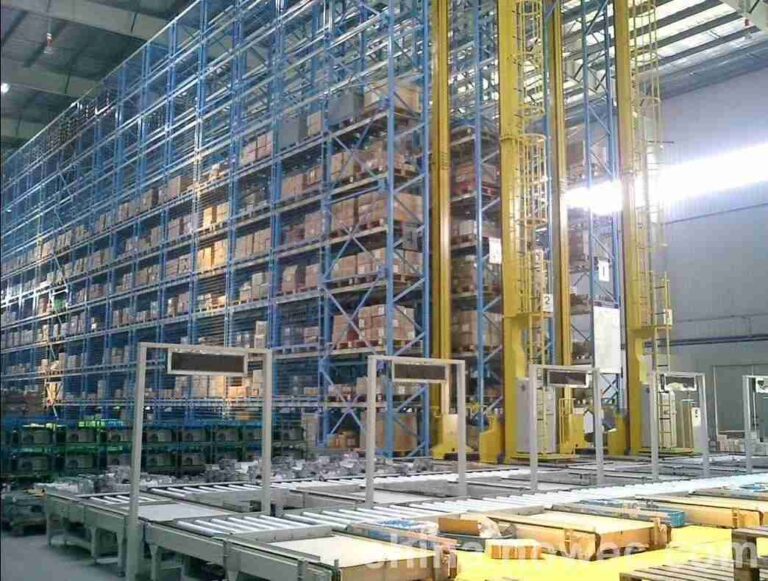📐 "First 50 Enterprise Queries Get Custom 3D Warehouse Design" Plan

The Future of Warehousing is Automated
The logistics industry is undergoing a radical transformation, with AGV forklift racking systems emerging as the backbone of modern warehouse automation. These intelligent storage solutions combine the precision of automated guided vehicles (AGVs) with high-density racking configurations, creating warehouses that are faster, safer, and infinitely more efficient.
For warehouse managers looking to optimize space and streamline operations, choosing the right AGV forklift racking isn’t just an upgrade—it’s a complete reimagining of storage logistics. This comprehensive guide explores the most effective AGV-compatible racking systems, their benefits, and how businesses can implement them for maximum ROI.

1. Why AGV Forklift Racking is Revolutionizing Modern Warehouses
1.1 The Automation Boom in Logistics
With global e-commerce growing at 14% annually (Statista 2023), warehouses must adapt to handle higher volumes with fewer errors. AGV forklifts are now essential, but they require specialized racking systems to function at peak efficiency.
1.2 The Problem with Conventional Racking
Traditional pallet racking often fails when paired with AGV forklifts, leading to:
Navigation errors due to inconsistent aisle widths
Structural damage from repeated AGV contact
Inefficient storage that wastes vertical space
The solution? AGV-optimized racking systems designed specifically for automated workflows.
2. The Top 5 AGV Forklift Racking Systems for High-Density Storage
2.1 Narrow Aisle Racking (NA Racking) – The Space-Saving Champion
Best for: Warehouses with limited square footage
Aisle widths as narrow as 1.6m (vs. 3.5m for conventional setups)
Compatible with most AGV forklift models, including those from Jungheinrich and Crown
Increases storage capacity by 40-50% compared to standard selective racking
Case Example: A German auto parts distributor increased storage by 48% after switching to AGV-compatible narrow aisle racking.
2.2 Double Deep Racking – Maximizing Cubic Space
Best for: Facilities storing large quantities of identical SKUs
Stores pallets two-deep, effectively doubling storage density
Requires AGV forklifts with extended reach capability (minimum 10m lift height recommended)
Ideal for beverage distribution and bulk retail operations
2.3 Push-Back Racking – The High-Throughput Solution
Best for: Warehouses needing LIFO (Last-In, First-Out) access
Pallets ride on inclined rails, automatically moving forward as inventory is removed
AGV forklifts can access multiple loads without manual repositioning
30% faster loading/unloading compared to static racking
2.4 Pallet Flow Racking – Perfect for Perishables
Best for: Cold storage and FIFO (First-In, First-Out) operations
Gravity-fed system moves pallets automatically
Integrates seamlessly with AGV forklifts for hands-off operation
Eliminates product spoilage through perfect rotation
2.5 Automated Mobile Racking – The Ultimate Space Saver
Best for: Ultra-high-density storage needs
Motorized racks move on demand, creating aisles only when needed
Works with both AGV forklifts and AMRs (Autonomous Mobile Robots)
Up to 80% more storage than conventional systems
3. Critical Design Features of AGV Forklift Racking Systems
3.1 Precision Alignment Technology
Laser-guided positioning ensures perfect rack alignment (±2mm tolerance)
RFID tags at each bay help AGV forklifts locate pallets with 99.9% accuracy
3.2 Impact-Resistant Construction
3mm thick steel uprights withstand frequent AGV contact
Energy-absorbing protectors at potential impact points
3.3 Smart Integration Capabilities
WMS (Warehouse Management System) compatibility
Real-time load monitoring through IoT sensors
4. How to Select the Perfect AGV Forklift Racking System
4.1 Conduct a Comprehensive Warehouse Audit
Measure clear ceiling heights (accounting for sprinkler systems and lighting)
Map traffic flows to identify optimal rack placement
4.2 Match Racking to Your AGV Fleet
Forklift type: Counterbalance vs. reach truck requirements
Load capacity: Standard (1,000kg) vs. heavy-duty (2,500kg+) configurations
4.3 Future-Proofing Considerations
Modular designs that allow for easy expansion
Upgradable tech interfaces for emerging automation
5. The Tangible Benefits of AGV Forklift Racking Systems
✅ Space Utilization: Up to 80% better density than conventional racking
✅ Labor Savings: Reduce forklift operator costs by 60%
✅ Accuracy: 99.95% inventory placement precision
✅ Safety: Eliminate 90% of racking-related workplace accidents
6. Implementing AGV Racking: A Step-by-Step Guide
Consultation: Free 3D warehouse modeling
Prototyping: Small-scale system testing
Installation: Certified technicians handle implementation
Training: AGV forklift programming and safety protocols
7. Maintenance Best Practices for AGV Racking Systems
Monthly inspections for rack alignment and damage
Quarterly AGV calibration to maintain precision
Annual structural integrity checks by certified engineers
8. The Future of AGV Forklift Racking Technology
AI-powered dynamic slotting that adjusts storage in real-time
Self-healing rack coatings that repair minor impacts automatically
5G-connected AGV fleets with millisecond response times
9. Conclusion: Transforming Warehouses with AGV Forklift Racking
The integration of AGV forklifts with specialized racking systems represents the next evolution in warehouse automation. By adopting these advanced storage solutions, businesses can achieve unprecedented levels of efficiency, accuracy, and space utilization.
For operations ready to take the next step, [Company Name] offers free, no-obligation warehouse design consultations, combining decades of racking expertise with cutting-edge AGV integration knowledge.
[Schedule Your Free AGV Racking Assessment Today]
FAQs: Expert Answers to Common AGV Racking Questions
1. How much does AGV-compatible racking cost compared to traditional systems?
While initial costs are 20-30% higher, the ROI typically materializes within 18-24 months through labor savings and increased throughput.
2. Can we retrofit our existing racking for AGV forklifts?
Partial retrofits are possible but often require structural reinforcements. A professional assessment is recommended.
3. What’s the lead time for AGV racking installation?
Standard systems: 4-6 weeks. Custom configurations: 8-12 weeks. Expedited options available.
4. How do AGV racking systems perform in cold storage environments?
Specially treated steel and lubricants allow reliable operation at temperatures as low as -30°C.
5. What maintenance do AGV racking systems require?
Daily: Visual inspections
Monthly: Alignment checks
Annually: Full structural review
Welcome to contact us, if you need warehouse rack CAD drawings. We can provide you with warehouse rack planning and design for free. Our email address is: jili@geelyracks.com




